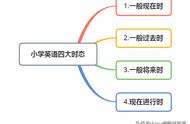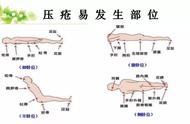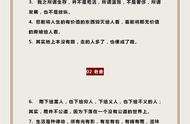
八大时态结构:
1,一般现在时
1、概念:表示经常发生的情况;有规律出现的情况;总是发生的;事实真理。
2.时间状语: Always, usually, often, sometimes, every week (day, year, month…), once a week (day, year, month…), on Sundays (on Mondays…), etc.
3.基本结构:主语 动词原形(如主语为第三人称单数,动词上要改为第三人称单数形式)
4.否定形式:主语 am / is / are not 其他;此时态的谓语动词若为行为动词,则在其前加 don't,如主语为第三人称单数,则用 doesn't,同时还原行为动词。
5.一般疑问句:把 be 动词放于句首;用助动词 do 提问,如主语为第三人称单数,则用 does,同时,还原行为动词。
eg:
①It seldom snows here. 这里很少下雪。
②He is always ready to help others. 他总是乐于帮助别人。
③Action speaks louder than words. 事实胜雄辩。
2,一般过去时
1.概念:过去某个时间里发生的动作或状态;过去习惯性、经常性的动作、行为。
2.时间状语:ago, yesterday, the day before yesterday, last week, last (year,night,month…), in 1989, just now, at the age of 5, one day, long long ago, once upon a time,etc.
3.基本结构:主语 动词的过去式或 be 的过去式 名词
4.否定形式:主语 was / were not 其他;在行为动词前加didn't,同时还原行为动词。
5.一般疑问句:was 或 were 放于句首;用助动词 do 的过去式 did 提问,同时还原行为动词。
eg:
①She often came to help us in those days.那些天她经常来帮助我们。
②I didn't know you were so busy.我不知道你这么忙。
3,一般将来时
1.概念:表示将要发生的动作或存在的状态及打算、计划或准备做某事。
2.时间状语:Tomorrow, next day (week,month, year…), soon, in a few minutes, by…, the day after tomorrow,etc.
3.基本结构:主语 am/is / are going to do 其它;主语 will / shall do 其它
4.否定形式:主语 am /is/ are not going to do;主语 will / shall not do 其它
5.一般疑问句:be 放于句首;will / shall 提到句首。(首字母大写)
eg:
①They are going to have a competition with us in studies.他们将在学习中与我们竞争。
②It is going to rain.天要下雨了。
4,一般过去将来时
1.概念:立足于过去某一时刻,从过去看将来,常用于宾语从句中。
2.时间状语:The next day (morning, year…), the following month (week…), etc.
3.基本结构:主语 was / were going to do 其它;主语 would / should do 其它
4.否定形式:主语 was / were not going to do 其它;主语 would/should not do.
5.一般疑问句:was 或 were 放于句首;would / should 提到句首
eg:
①He said he would go to Beijing the next day. 他说他第二天要去北京。
②I asked who was going there. 我问,谁要去那里。
5,现在进行时
1.概念:表示现阶段或说话时正在进行的动作及行为。
2.时间状语:Now, at this time, days, look, listen, etc.
3.基本结构:主语 be doing 其它
4.否定形式:主语 be not doing 其它
5.一般疑问句:把be动词放于句首。
eg:
①Are you feeling good today?你今天感觉如何?
②He is doing well in his lessons.在课上他表现得很好。
6,过去进行时
1.概念:表示过去某段时间或某一时刻正在发生或进行的行为或动作。
2.时间状语:at this time yesterday, at that time 或以 when 引导的谓语动词是一般过去时的时间状语等。
3.基本结构: 主语 was / were doing 其它
4.否定形式:主语 was/were not doing 其它
5.一般疑问句:把 was 或 were 放于句首。(第一个字母大写)
eg:
①At that time she was working in a company. 那段时间她在一家公司工作。
②When he came in, I was reading a newspaper. 他进来时,我正在读报纸。
7,现在完成时
1.概念:过去发生或已经完成的动作对现在造成的影响或结果,或从过去已经开始,持续到现在的动作或状态。
2.时间状语:yet, already, just, never, ever, so far, by now, since 时间点,for 时间段,recently, lately, in the past few years,etc.
3.基本结构:主语 have / has 过去分词 其它
4.否定形式:主语 have / has not 过去分词 其它
5.一般疑问句:have 或 has 放句首。
eg:
①I've written an article. 我已经写了一篇论文。
②The countryside has changed a lot in the past few years. 在过去的几年,农村发生了巨大的变化。
8,过去完成时
1.概念:过去发生或者已经完成的动作对现在造成的影响或结果,或从过去已经开始,持续到现在的动作或状态。
2.时间状语:before, by the end of last year (term, month), etc.
3.基本结构:had done.
4.否定形式:had not done.
5.一般疑问句:had 放于句首。
6.用法:
(1)在told, said, knew, heard, thought等动词后的宾语从句中。
eg:
She said (that) she had never been to Paris. 她告诉我她从来没有去过巴黎。
(2)在过去不同时间发生的两个动作中,发生在先,用过去完成时;发生在后,用一般过去时。
eg:
①When the police arrived, the thieves had run away. 警察到达时,小偷们早就跑了。
(3)表示意向的动词,如hope, wish, expect, think, intend, mean,suppose等,用过去完成时表示"原本…,未能…"。
eg:
①We had hoped that you would come, but you didn't. 那时我们希望你能来,但是你没有来。
②I had hardly opened the door when he hit me. 我刚打开门,他就打了我。
(注意:had hardly… when... 刚......就......)
③He had no sooner bought the car than he sold it. 他刚买了这辆车,转眼又卖了。
(注意:had no sooner…than 刚…… 就……)
声明:内容转自网络,如有侵权请联系删除

























